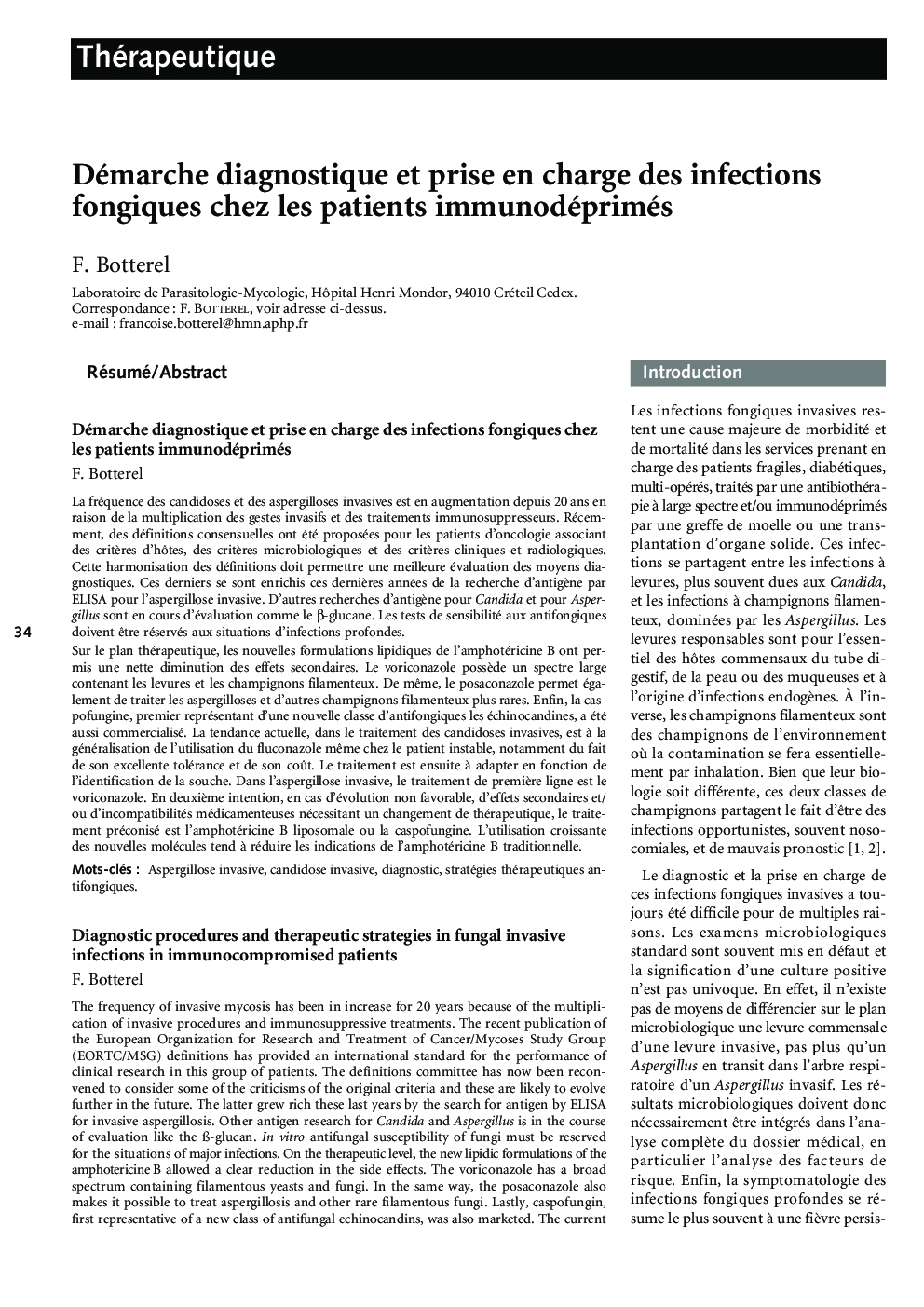| Article ID | Journal | Published Year | Pages | File Type |
|---|---|---|---|---|
| 3396141 | Antibiotiques | 2007 | 10 Pages |
Abstract
The frequency of invasive mycosis has been in increase for 20 years because of the multiplication of invasive procedures and immunosuppressive treatments. The recent publication of the European Organization for Research and Treatment of Cancer/Mycoses Study Group (EORTC/MSG) definitions has provided an international standard for the performance of clinical research in this group of patients. The definitions committee has now been reconvened to consider some of the criticisms of the original criteria and these are likely to evolve further in the future. The latter grew rich these last years by the search for antigen by ELISA for invasive aspergillosis. Other antigen research for Candida and is in the course of evaluation like the Ã-glucan. In vitro antifungal susceptibility of fungi must be reserved for the situations of major infections. On the therapeutic level, the new lipidic formulations of the amphotericine B allowed a clear reduction in the side effects. The voriconazole has a broad spectrum containing filamentous yeasts and fungi. In the same way, the posaconazole also makes it possible to treat aspergillosis and other rare filamentous fungi. Lastly, caspofungin, first representative of a new class of antifungal echinocandins, was also marketed. The current tendency, in the treatment of the invasive candidosis, is with generalization of the use of fluconazole even in the unstable patient, in particular because of its excellent tolerance and of its cost. The treatment is then to adapt according to the identification of the strain. In invasive aspergillosis, the treatment of first line is voriconazole. In second intention, in the event of non favorable evolution, of side effects and/or medicamentous incompatibilities requiring a change of therapeutics, the recommended treatment is the liposomal amphotericin B or caspofungin. The increasing use of the new molecules tends to reduce the indications of the traditional amphotericin B.
Keywords
Related Topics
Health Sciences
Medicine and Dentistry
Infectious Diseases
Authors
F. Botterel,
